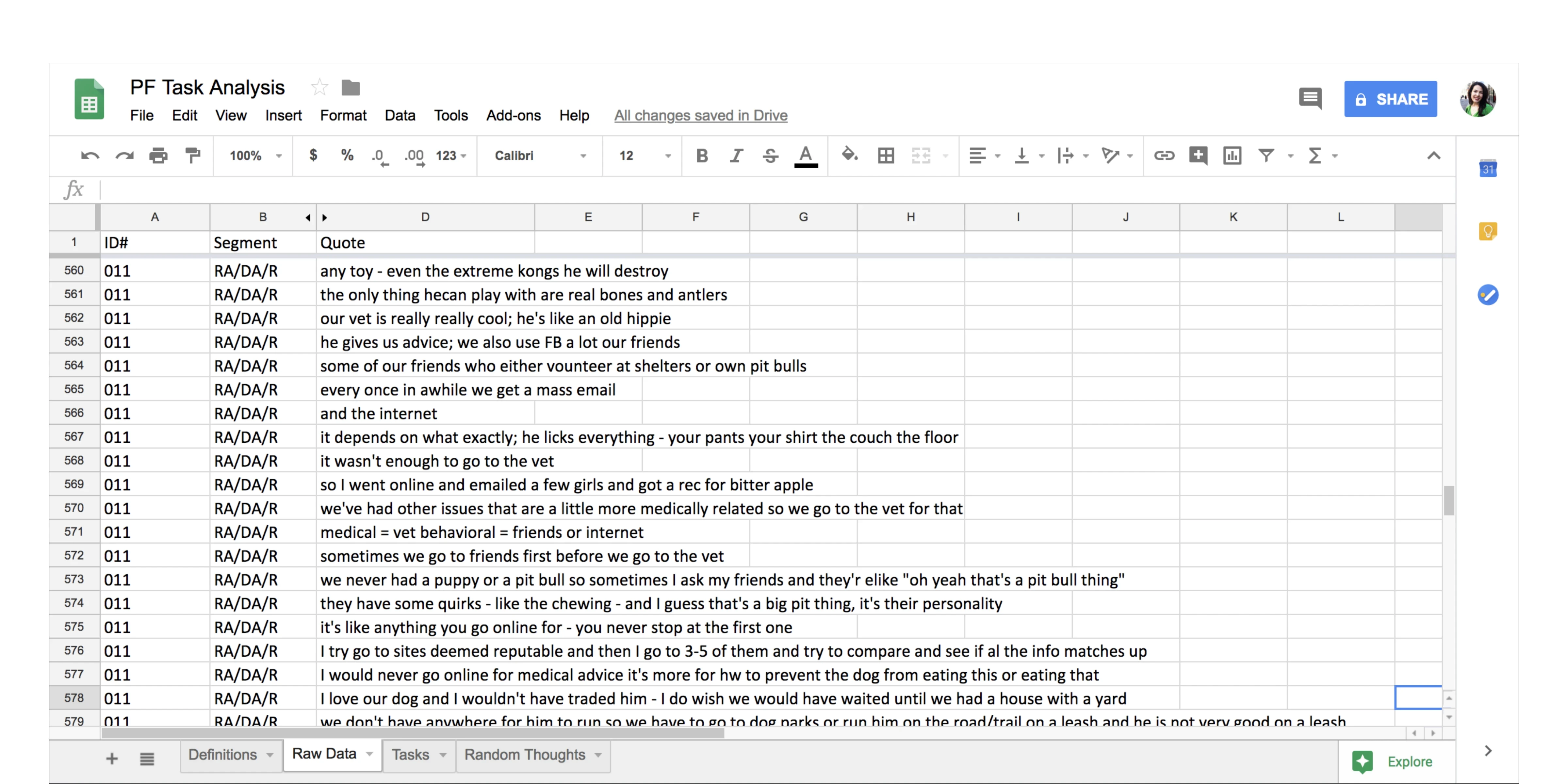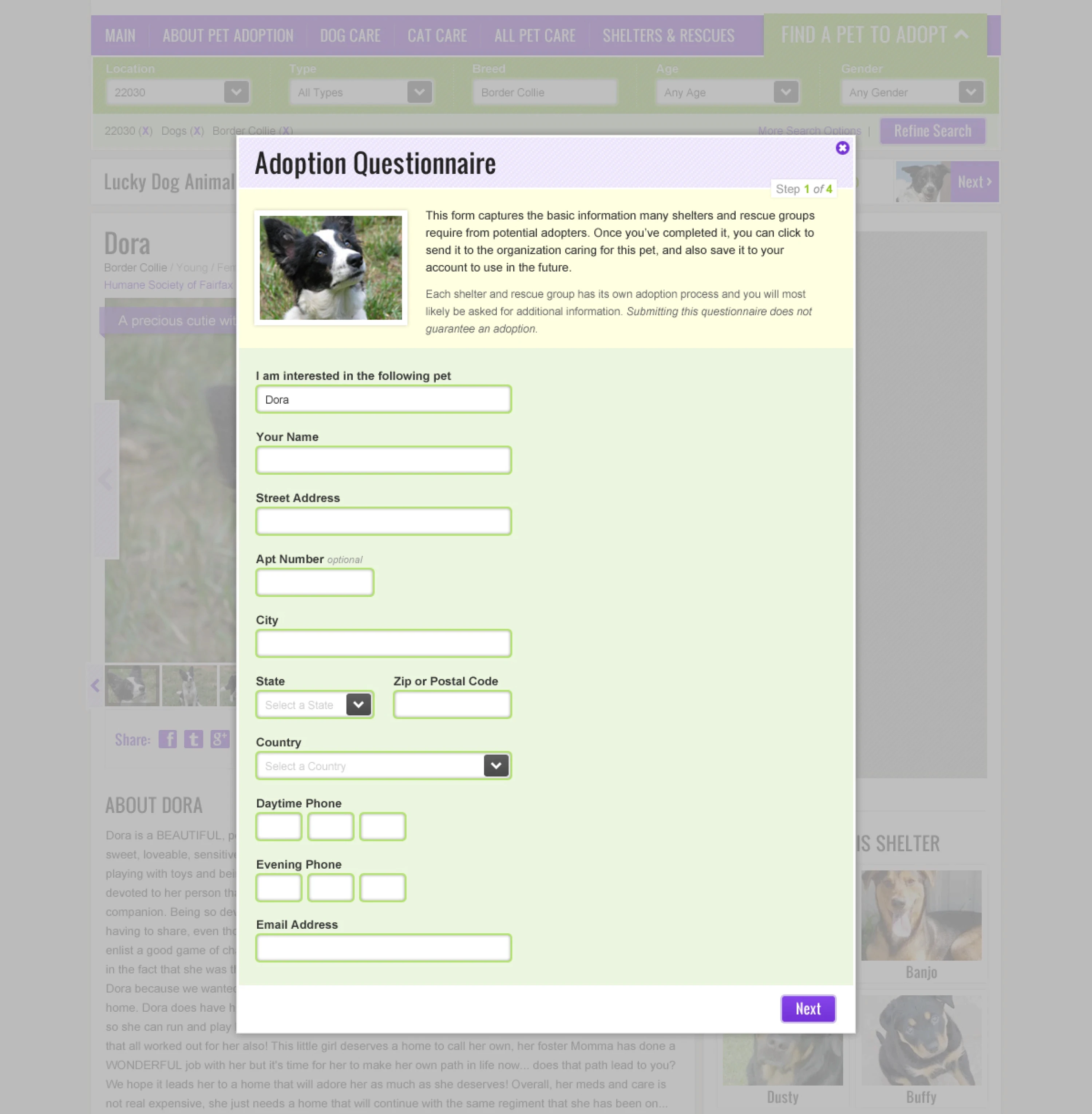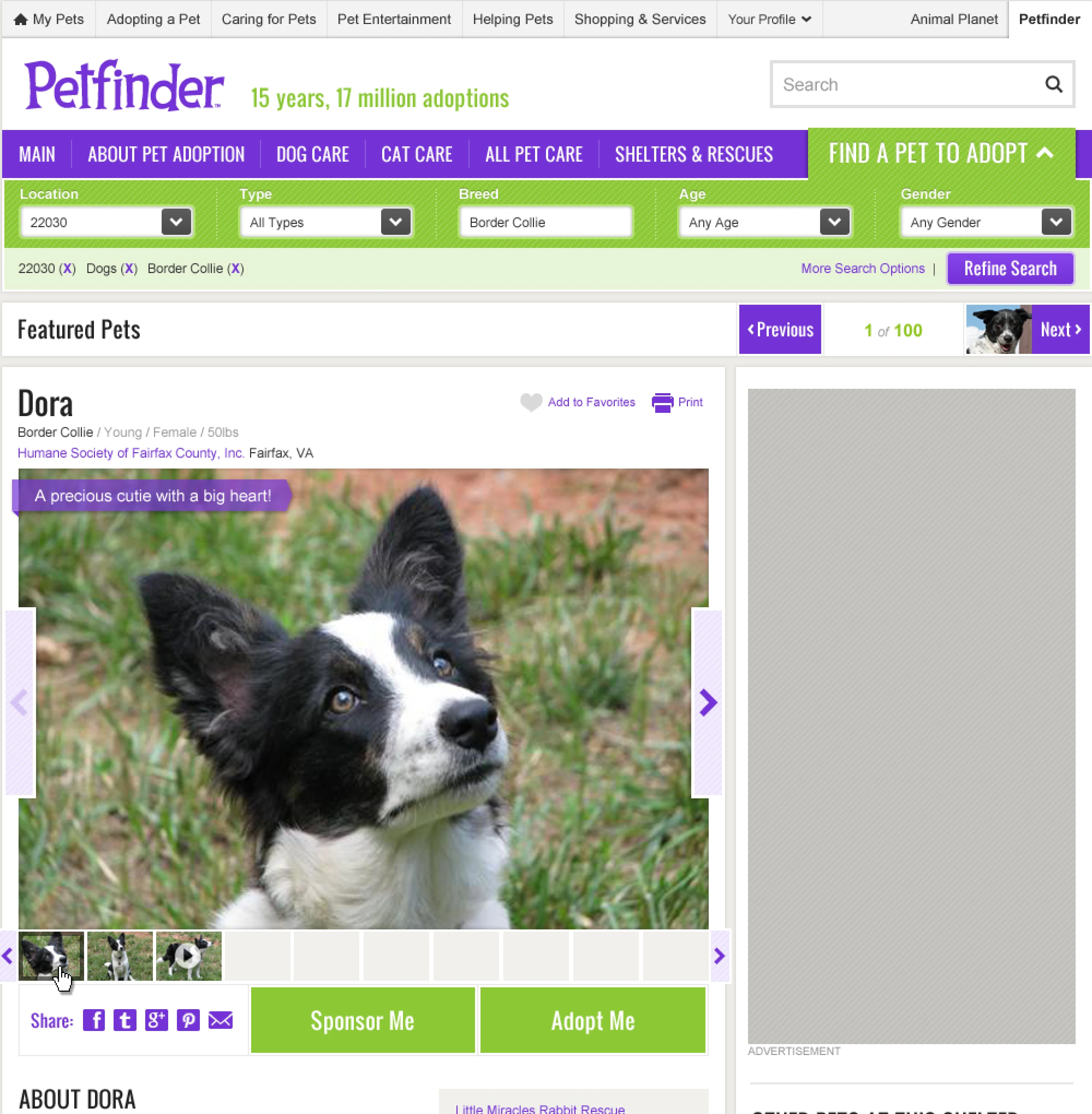Mental Model
Understanding the pet adoption experience.
Creating a mental model that details how people find, adopt, and bring home a rescue pet.
Overview
Problem
For a planned site redesign, our team, including an external creative agency, needed a detailed understanding of the pet adoption journey from pet owners' perspectives.
Solution
Mental models capture peoples' understanding of how something functions in the real world.
I created a mental model from qualitative interviews to capture the adoption process: major stages, key tasks, user behaviors, and motivations. With the model, the team could align site content and features with how users approach pet adoption.
Impact
The mental model quickly oriented our team, informed decision-making, and inspired future site features.

Role & Responsibilities
As Senior User Interface Designer, my primary responsibility was UX/UI, along with the external agency.
I created the mental model as an independent initiative in addition to design work.
I was a team of one: initiating, leading, planning, executing, and communicating all research.
Project Team
Business Owner
Head of Design
UX/UI Designer (me)
Visual Designer
External Agency
Research Timeline
One month
Approach
Recruit & interview
I reached out to 11 pet owners via friend-of-friend-friend posting on social media, ultimately conducting 60-minute interviews.
Screening criteria
Successfully adopted a rescue pet, still with them, within the last year.
Adopted either a cat or dog.
First-time or experienced adopters.
Utilized shelters or rescue organizations.
Interview topics
Interviews explored the adoption journey in detail, not only limited to the Petfinder site. In fact, using Petfinder was not a requirement.
Research goals were to understand at a detailed level:
What drives pet choice.
How adopters find pets.
The adoption steps in detail.
Integrating a pet into a new home.

"I felt we were doing something really important and special here. We knew this dog wouldn't be destroyed or left to starve at a racetrack.”
— Abbey, Ohio
Analyze
Task breakdown
I transcribed all interviews, breaking them down into nearly 600 individual tasks.
Task groups
From the interviews, I identified patterns, grouping tasks into categories, and organizing them into broader mental spaces.
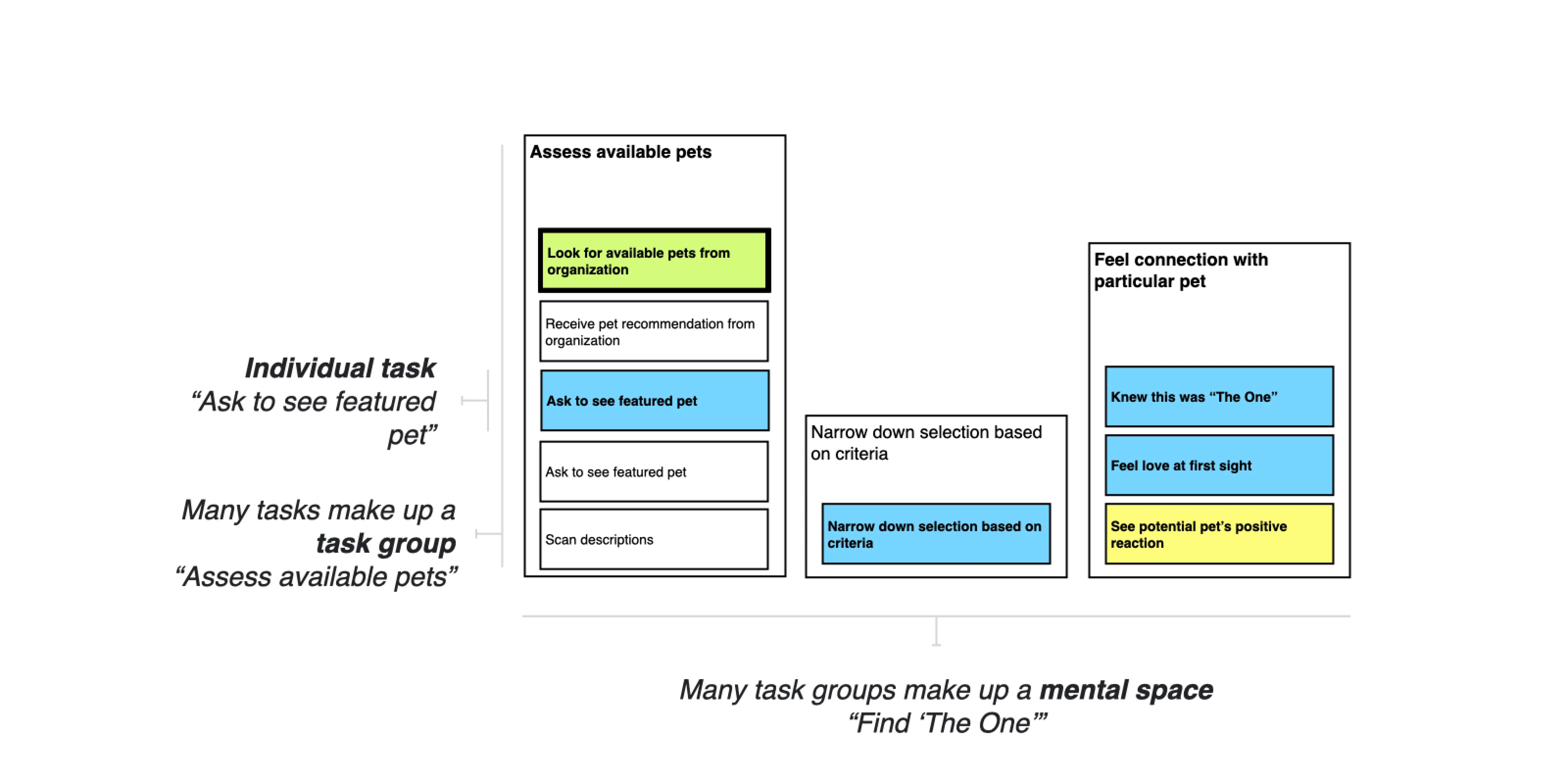
Defining mental spaces
The adoption mental model was divided into six key mental spaces, in this approximate order:
Consider a new pet
Decide to adopt pet
Determine wants
Find organization
Find "the one"
Bring pet home
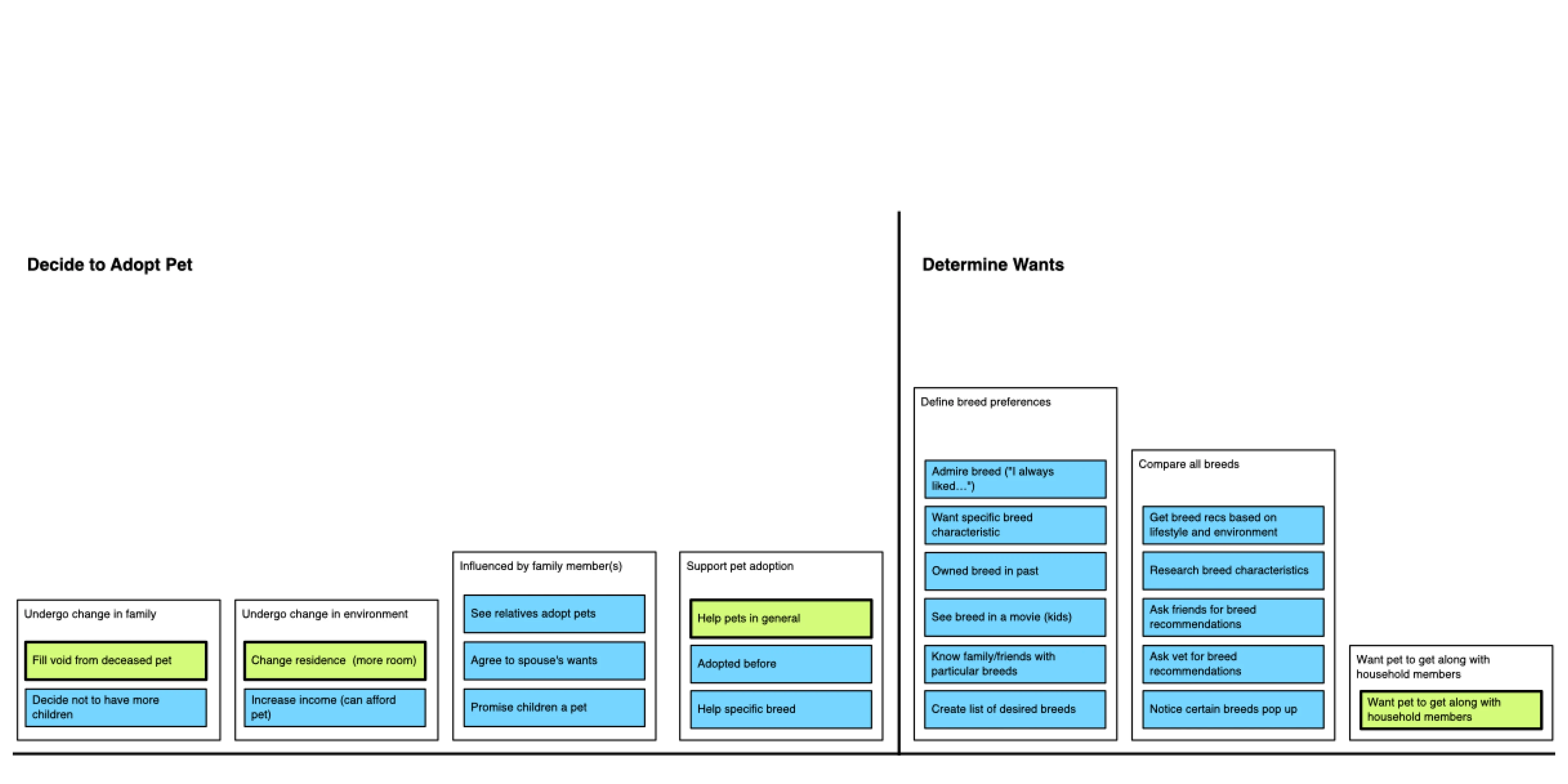
Deliverable
Visualizing the experience
Subtasks were stacked into larger groups. The resulting model looked like "towers" that were organized according to mental space, illustrating the adoption journey.
I color-coded tasks for cat and dog adoptions and used bolded boxes to highlight common actions.
The final visual was a detailed, poster-sized landscape of the pet adoption process.
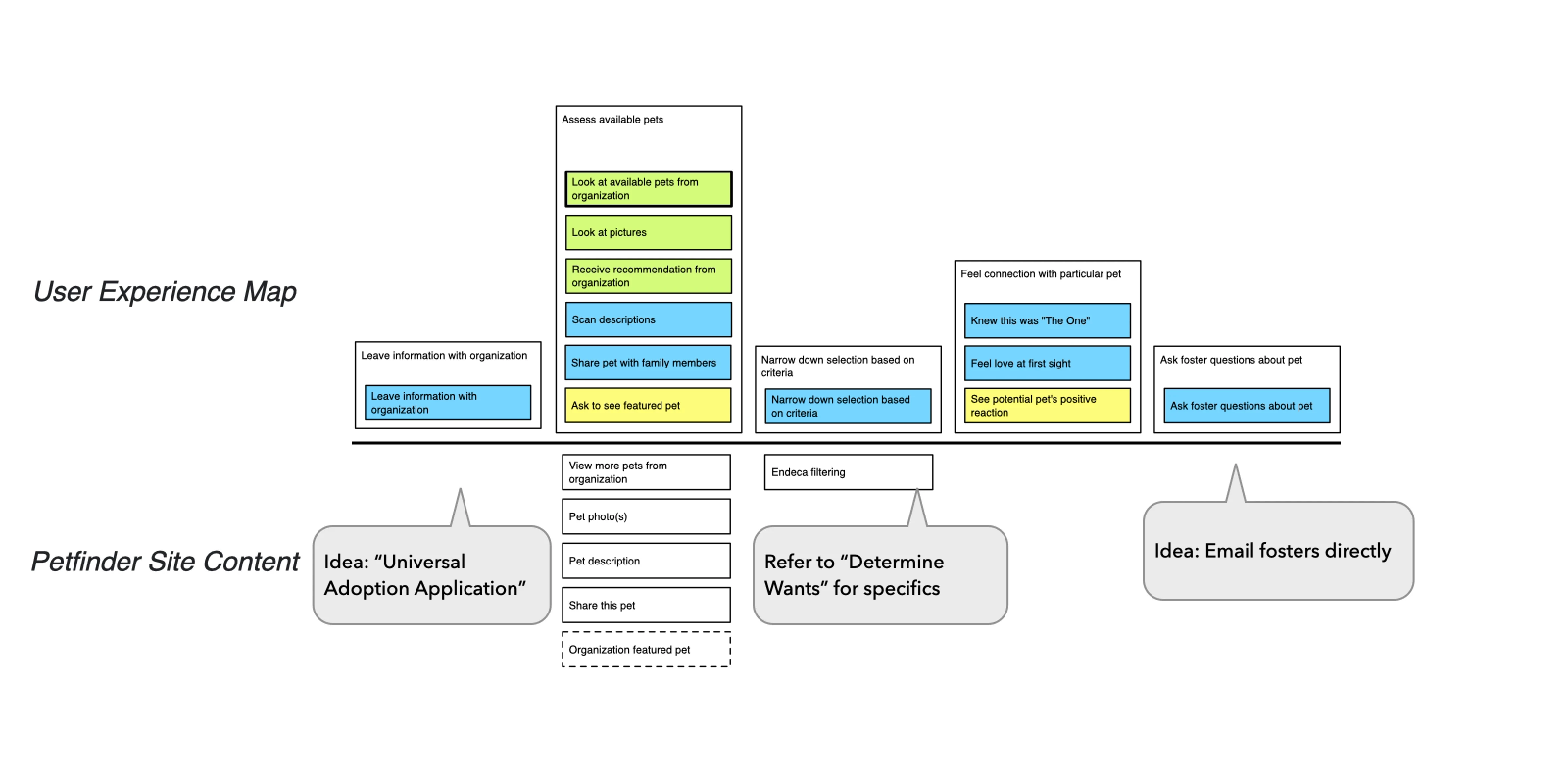
Application & uses
Identifying content gaps
Matched the site's content against the mental model to identify and fill gaps.
Inspiring new ideas
Content gaps could be potential opportunities. An example is a universal adoption application for adopters to apply for a specific pets with organizations.
Informing UX
Fairly linear processes such as adoption provide a baseline for UX and journey mapping.

Key learnings
Identify areas of further detail.
Mapping the adoption process from a shelter point of view would provide a more comprehensive view of the adoption process.
For any feature idea directly affecting shelters, such as a universal adoption application, modeling with shelters would be a critical next step.
Approach mapping as a group activity.
Like most user research techniques, buy-in is dramatically accelerated when the entire team participates in the creation. This particular model was a skunkworks experiment and wasn't kicked off as a full group activity.
However, since this project I have involved many team members in interviewing, documenting, and creating models.

